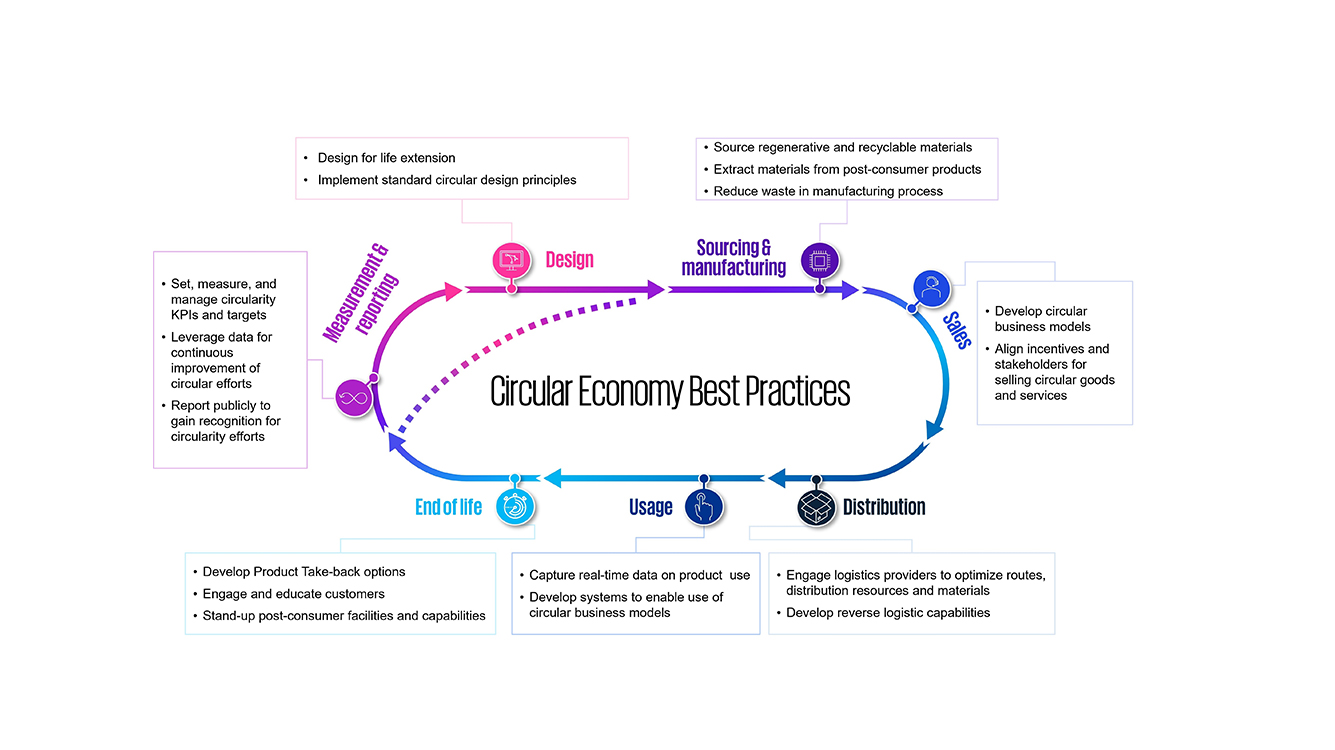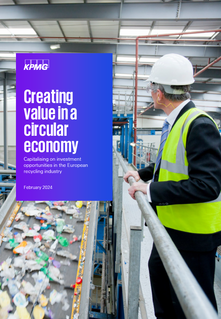Businesses are increasingly turning towards circularity to spur sustainable business growth. Circular business models and initiatives can support companies in reducing emissions and waste, while spurring innovation and new go-to-market models. Like any growth initiative, it is paramount to build a fit-for-purpose strategy and execution plan to successfully realize the value of circularity.
- Blythe Chorn, ESG Circular Economy Leader
A winning approach to circularity requires a robust understanding of opportunities available across the value chain—from increasing use of recycled materials to extending the lifetime use of product to recovering valuable materials at end-of-life--and how they apply to different customer needs, product types, and business objectives. But identifying circular opportunities for your business and how to achieve them is no simple task – that is where we come in.








